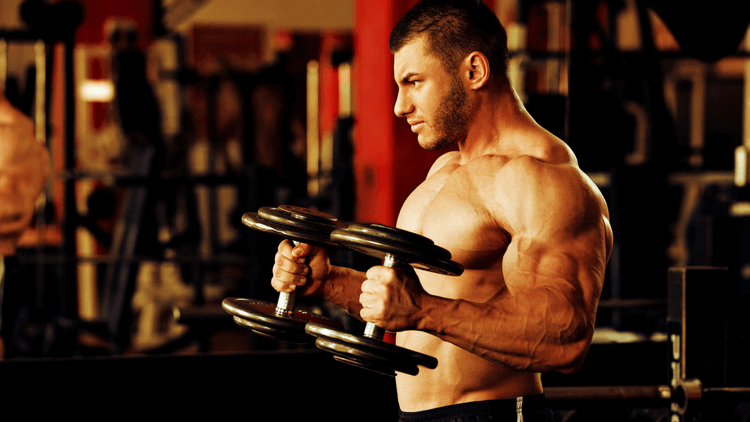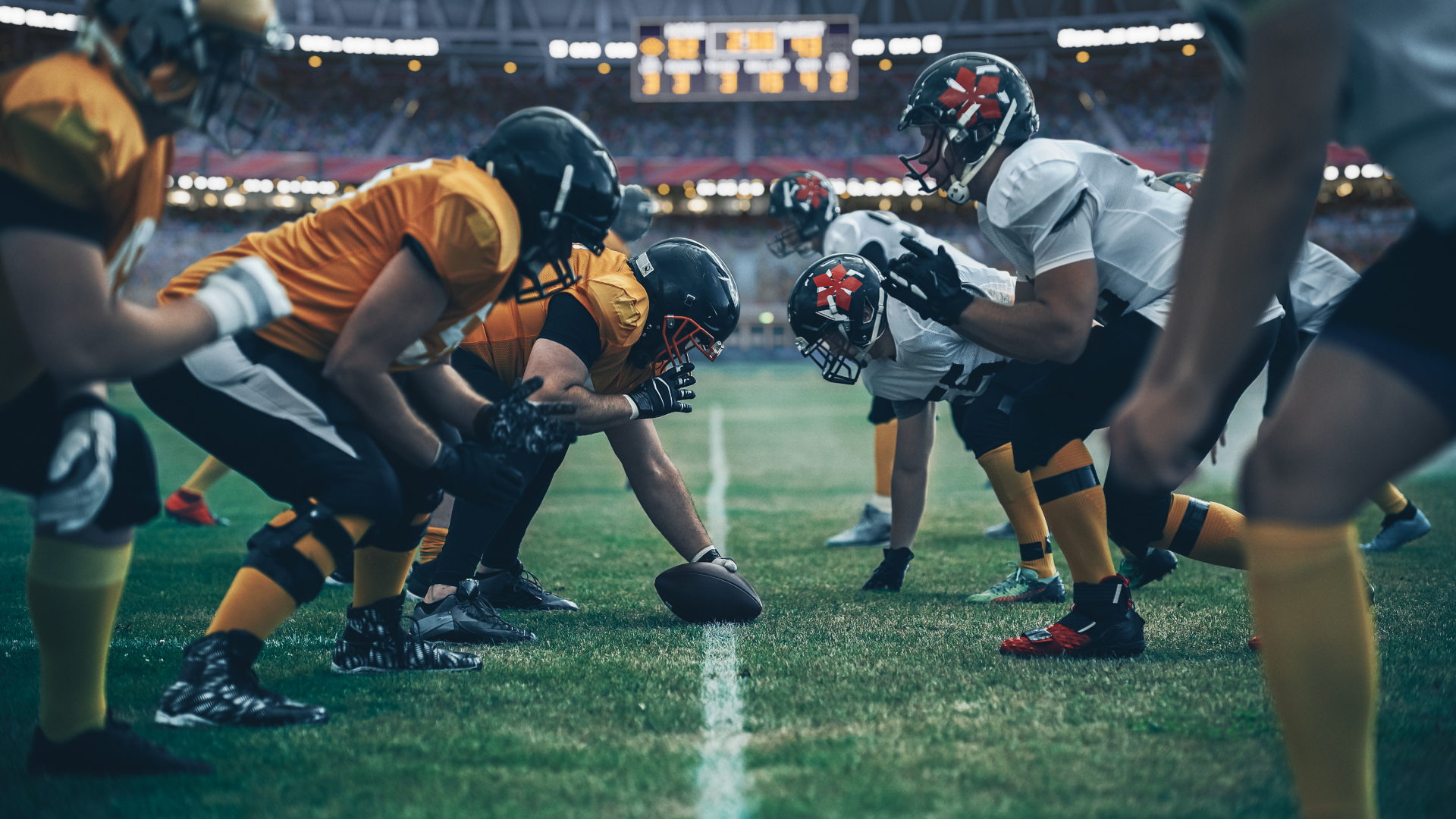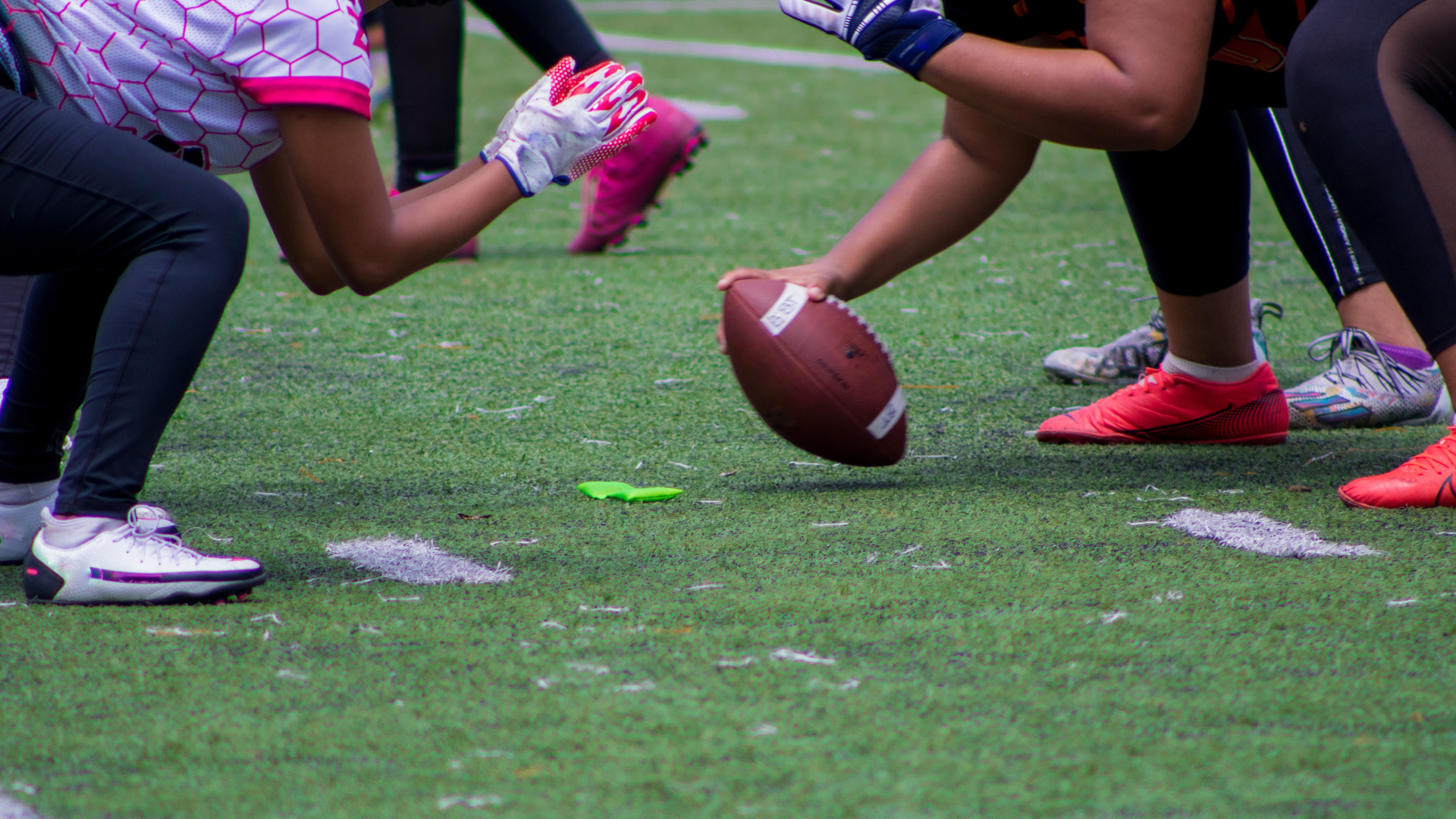Are you struggling to put on weight and want to gain mass through exercise? Look no further as we have a delve into how to achieve weight gain, muscle and body mass through exercise.
If you feel like you’re exhausted from scouring the internet for ways to pack on the pounds, let this be your last stop, as this guide will help you gain weight through exercise—the healthy way.
Our aim is to cancel out the noise and get straight to the point. We’ll cover how to gain muscle mass, examples of exercises to help you gain weight, foods, and supplements that can assist you in your weight gain journey. We’ll also cover what to look out for or avoid when trying to put on the pounds.
Tired of not filling out your clothes? Want to stack on muscle? This guide has everything you need to kickstart or boost your weight gain journey.
Epic gains coming your way.
What are the best weight gain exercises?
Figuring out how to use exercise to increase body weight can be a minefield—we’ve got your back.
If you aim to gain weight healthily and build lean muscle mass, you need to weave a combination of strength and resistance training, compound exercises, and progressive overload techniques into your training schedule.
Let’s get into some examples of weight gain exercises right now…
Compound Exercises
Compound exercises use several muscle groups at the same time. They’re especially good for people who prefer to combine two exercises into one move to target even more muscles.
Squats
Squats are a powerful way of targeting multiple muscle groups, including the quadriceps, hamstrings, glutes, and lower back. They’re excellent for building overall lower body strength and muscle mass.
Deadlifts

Deadlifts mainly target the posterior chain muscles, including the hamstrings, glutes, lower back, and traps. They are effective for building overall strength and muscle mass.
Bench presses
The bench press is a colossal compound exercise that primarily targets the chest muscles, shoulders, and triceps. It’s crucial for building upper body strength and muscle mass.
Pull-ups and chin-ups
Pull-ups and chin-ups are compound exercises that target the back, biceps, and shoulders. They’re legendary for building upper body strength and muscle mass.
Barbell rows
Barbell rows target the upper back, lats, and biceps. They help to improve overall back strength and boost muscle mass in a big way.
Isolation Exercises
Isolation exercises are used to tackle one specific muscle group or joint at a time. Although no exercises use only one muscle group, isolation exercises specifically target one area of your body.
Let’s get into some examples.
Bicep Curls

Bicep curls isolate the biceps and are a powerhouse when it comes to building arm strength and muscle mass.
Tricep Extensions
Tricep extensions isolate the triceps and help to build arm strength and muscle mass.
Lateral Raises
Lateral raises target the deltoid muscles and help to build shoulder strength and size.
Leg Press
The leg press isolates the quadriceps, hamstrings, and glutes and is effective for building lower body strength and muscle mass.
Progressive Overload
Progressive overload involves gradually increasing the weight, sets, or reps of your exercises over time to continually challenge your muscles and promote growth.
Aim to progressively increase the weight you lift for each exercise while maintaining proper form to stimulate muscle growth.
Accessory Exercises
Accessory exercises target smaller muscle groups and can help to improve overall muscle balance and development.
These epic movements include calf raises, leg curls, leg extensions, shoulder presses, and dumbbell flyes.
Functional Movements
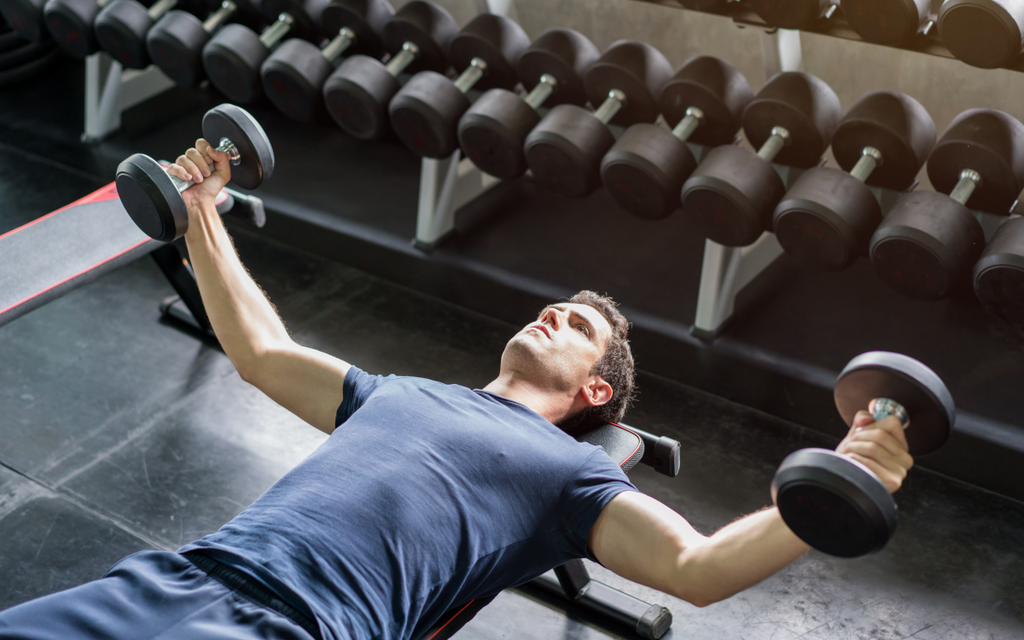
Adding functional movements that mimic real-life activities into your daily life can help to improve overall strength and muscle coordination.
Examples of this include lunges, step-ups, farmer's walks, and sled pushes.
Ensure adequate rest and recovery between workouts to allow your muscles time to repair and grow.
Aim for at least 48 hours of rest between training sessions for the same muscle group.
Remember:
Always prioritize proper form, technique, and safety when performing any exercise. If you're new to resistance training or unsure about proper technique, consider working with a certified personal trainer to develop a safe and effective workout program tailored to your goals. If you’re using free weights or machines, please use them in a safe and responsible manner.
Top Tip: Check out this muscle-boosting beginner’s bodyweight workout routine from legendary personal trainer and fitness expert, Chris Tripp…
The exercises and habits to avoid when trying to gain weight
When trying to gain weight, especially lean muscle mass, it's important to focus on exercises that promote muscle growth.
You should avoid activities that may hinder your progress or increase the risk of injury. Here are some exercises or activities to approach with caution or stay away from…
Excessive cardio
While cardiovascular exercise has numerous health benefits, excessive cardio can burn a significant amount of calories, making it more challenging to create a calorie surplus needed for weight gain.
If you're focusing on gaining weight, limit excessive cardio sessions and prioritize resistance training instead.
Isolation exercises only
While isolation exercises can be beneficial for targeting specific muscle groups, focusing exclusively on isolation exercises may not be the most efficient way to gain overall muscle mass.
Compound exercises, which involve multiple muscle groups working together, should be prioritized for maximizing muscle growth and strength.
Too many low-intensity exercises
Low-intensity exercises, such as light jogging or leisurely cycling, may not provide enough stimulus for muscle growth.
While these activities have their place in a well-rounded fitness routine, prioritize higher-intensity exercises like resistance training to grab those big gains.
Poor form and technique
Performing exercises with improper form and technique increases the risk of injury and reduces the effectiveness of the exercise.
Focus on maintaining proper form throughout each exercise, and consider working with a certified personal trainer to learn the proper technique and form.
Excessive volume without proper recovery
While volume (the total amount of work performed in a workout) is important for muscle growth, excessive volume without adequate rest and recovery can lead to overtraining and hinder progress.
Allow sufficient time for rest and recovery between workouts to optimize muscle repair and growth.
Ignoring personal limitations and pre-existing injuries
If you have pre-existing injuries or physical limitations, certain exercises may not be suitable for you.
Avoid exercises that exacerbate pain or discomfort, and consult with a healthcare professional or physical therapist for guidance on exercise modifications or alternatives.
How is muscle mass made?
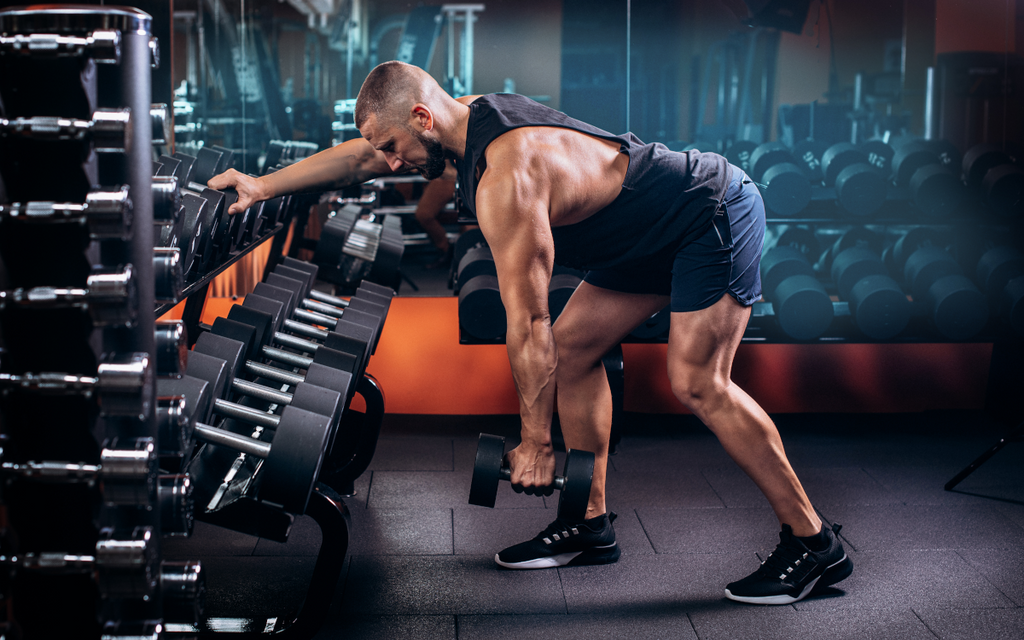
Muscle mass is mainly built through a process called muscle hypertrophy, which involves the increase in size of individual muscle fibers.
Here are the main mechanics of building lean, mean muscle mass…
Muscle damage
When your muscles are put through intense exercise, especially resistance training with weights, it causes microscopic damage to muscle fibers.
This damage triggers a repair process by the body, leading to the growth and strengthening of the muscle fibers.
Mechanical tension
Lifting heavy weights or applying resistance during exercise places mechanical tension on the muscle fibers.
This tension stimulates the muscle cells to adapt and grow stronger to better handle future loads.
Muscle protein synthesis
Following resistance training, the body increases muscle protein synthesis to repair and rebuild muscle fibers.
Getting your fill of quality protein is essential for this process, as proteins are the building blocks of muscle tissue.
Rest and recovery
Muscles require adequate rest and recovery time to repair and grow after exercise. Overtraining can hinder muscle growth, so allowing for proper rest periods between workouts is important.
Note: Understanding how muscle mass is made is essential to know how to grow and maintain muscle. Consistency in training and maintaining a balanced lifestyle are key factors in achieving significant muscle growth over time.
How exercise helps to gain weight
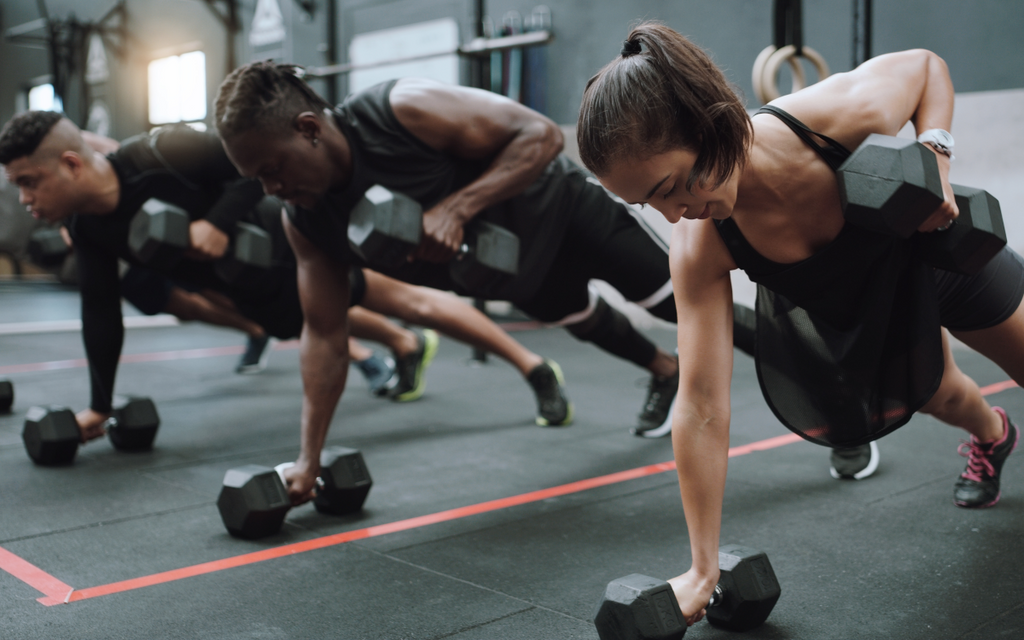
Exercise is vital if you’re looking to gain weight the healthy way.. Working out can help you to build muscle mass, encourage appetite growth and increase the density of your bones.
As you engage in resistance exercises, your muscles experience micro-tears, which prompt your body to repair and rebuild them stronger, bigger, and better. Over time, this leads to an increase in muscle mass, contributing to weight gain.
Plus, regular exercise can boost your metabolism and increase your appetite. When you engage in physical activity, especially intense workouts, your body burns calories for energy.
This can create a calorie deficit, which may stimulate hunger cues, encouraging you to eat more to replenish energy stores.
Eating more calories than you burn can lead to weight gain, particularly if those extra calories come from nutrient-dense foods.
What are the benefits of exercising for weight gain?
Although exercise is often associated with weight loss, it can also offer several benefits for people looking to maintain their weight or gain weight in a healthy way.
Here’s how.
Muscle gain
Resistance or strength training, stimulates muscle growth (hypertrophy), contributing to weight gain.
Increased appetite
Regular physical activity can boost your appetite by increasing energy expenditure and creating a greater demand for calories.
This can help people who struggle to consume enough calories to support weight gain by increasing their overall food intake.
Improved muscle strength and function
Strength training exercises not only increase muscle size but also improve muscle strength and function.
This can enhance overall physical performance, functional capacity, and quality of life, making everyday tasks easier to perform.
Enhanced bone health
Weight-bearing exercises, such as strength training and resistance exercises, stimulate bone growth and increase bone density.
This helps to strengthen bones and reduce the risk of osteoporosis, a condition characterized by brittle and fragile bones.
Metabolism
Exercise can improve metabolic health by increasing insulin sensitivity, promoting glucose uptake by muscles, and boosting metabolism.
These metabolic changes can help optimize nutrient utilization and support healthy weight gain.
Mental health benefits
Exercise has numerous mental health benefits, including reducing stress, anxiety, and depression, and improving mood and overall psychological wellbeing.
These benefits can indirectly support weight gain by promoting a healthy appetite and reducing emotional barriers to eating.
Overall health and longevity
Engaging in regular exercise is associated with numerous health benefits, including reduced risk of chronic diseases such as heart disease, diabetes, and certain cancers.
By promoting overall health and longevity, exercise can support weight gain in a sustainable and healthful manner.
What is an excellent way to gain weight fast?
Gaining weight quickly should be approached with caution to ensure that the weight gained is primarily in the form of lean muscle mass rather than excess body fat.
Here are some strategies to help you gain weight effectively and relatively quickly:
- Increase caloric intake
- Eat frequently
- Consume extra protein
- Strength training
- Eat calorie-dense foods
- Stay hydrated
- Get adequate rest and recovery
- Monitor progress
Healthy foods for healthy weight gain

Healthy foods for weight gain are those that are calorie-dense, nutrient-rich, and provide essential macronutrients (carbohydrates, proteins, and fats), as well as micronutrients (vitamins and minerals).
Here are examples of healthful foods that can support weight gain in a balanced and nutritious way…
Nut and seed butters
Peanut butter, almond butter, cashew butter, and other nut or seed butters are calorie-dense sources of healthy fats, protein, and micronutrients like magnesium and vitamin E. Spread them on whole grain bread, crackers, or fruit, or add them to smoothies or oatmeal.
Avocado
Avocados are rich in healthy fats, particularly monounsaturated fats, which can help increase calorie intake. They also provide fiber, vitamins (such as vitamin K, vitamin E, and vitamin C), and minerals (like potassium).
Whole milk and dairy products
Whole milk, cheese, yogurt, and other full-fat dairy products are rich in protein, calcium, and other essential nutrients. They can be consumed on their own or used as ingredients in smoothies, soups, sauces, and baked goods.
Dried fruits
Dried fruits like raisins, dates, apricots, and figs are concentrated sources of calories, carbohydrates, and natural sugars. They also provide fiber, vitamins, and minerals. Enjoy dried fruits as a snack or add them to oatmeal, yogurt, or salads.
Nuts and seeds
Almonds, walnuts, pecans, pumpkin seeds, and sunflower seeds are nutrient-dense sources of healthy fats, protein, fiber, vitamins (such as vitamin E and B vitamins), and minerals (like magnesium and zinc). Enjoy them as a snack or add them to salads, yogurt, or trail mix.
Whole grains
Whole grains like quinoa, brown rice, oats, barley, and whole wheat pasta are rich in complex carbohydrates, fiber, protein, vitamins, and minerals. They provide sustained energy, and you can add them to meals like grain bowls, stir-fries, soups, and salads.
Lean protein sources

Lean protein sources like chicken breast, turkey breast, fish, tofu, tempeh, and legumes (such as beans, lentils, and chickpeas) provide high-quality protein to support muscle growth and repair. Include them in meals and snacks throughout the day.
Healthy oils
Healthy oils like olive oil, avocado oil, coconut oil, and flaxseed oil are calorie-dense sources of healthy fats. Use them for cooking, salad dressings, or drizzling over meals to increase calorie intake.
Granola and granola bar
Granola and granola bars made with whole grains, nuts, seeds, and dried fruits are convenient, calorie-dense snacks that provide a combination of carbohydrates, protein, and healthy fats.
Smoothies and shakes
Blend together ingredients like fruits, vegetables, Greek yogurt, nut butter, milk or milk alternatives, protein powder, and oats to create calorie-dense smoothies and shakes that can be enjoyed as snacks or meal replacements.
Need help with your gains? Meet Crazy Bulk’s Bulking Stack
If you’re finding it hard gaining weight, Crazy Bulk’s Bulking Stack might just be the perfect combo of supplements for you.
The stack will help accelerate the bulking process and maximize your muscle growth. The combination of bodybuilding supplements includes ingredients to activate the big bad Beast Mode and help you smash your way through each and every workout.
If you want more muscle mass, improved strength and a faster recovery time, this is for you.
Try our best-selling stack of powerful bulking products combined to help you build muscle fast.
Each Stack Contains…
- 1 X D-Bal
- 1 X Testo-Max
- 1 X Deca-Max
- 1 X Tren-Max
- 1 X FREE Bulking Guide
Go get some!
So, can I really gain weight using exercise?

Performing plenty of weight gain exercises, getting adequate sleep, great nutrition and allowing your body rest and recovery can be an effective strategy to gain weight.
By understanding the importance of all strategies, you can optimize your workout routine and diet and lifestyle habits to contribute towards your weight gain journey.
Remember to listen to your body, eat well and incorporate the weight gain exercise examples in your workout plan. Pay attention to your pre and post-workout nutrition to ensure you have enough energy for exercise and promote proper muscle recovery.
Doing the right exercises combined with great nutrition has shown promising results for many.
But, it's important to remember that everyone's body is unique. What works for one person may not work for another. If you're considering exercising to gain weight, it's always best to talk to a personal trainer and healthcare provider to ensure it aligns with your individual needs and goals.
So, if you're ready to take your journey to the next level and supercharge your exercise routine, go ahead and give it a try—you might just be pleasantly surprised by the results.
FAQs
How to gain 10 pounds in a month?
Gaining 10 pounds in a month is an intense goal and may not be achievable or healthy for everyone.
But, if you're determined to gain weight rapidly and it is deemed safe, here are some strategies you can consider…
- Increase caloric intake
- Eat calorie-dense foods
- Eat more frequently
- Include protein in every meal
- Strength training
- Use weight gainer supplements
- Get plenty of rest and sleep for muscle recovery
- Stay hydrated
When should I workout to gain weight?
The timing of your workouts can play a role in supporting weight gain, particularly in terms of muscle growth and recovery.
To gain more weight, schedule your workouts when it’s a time you can be consistent, as it is key to your journey. Plus, you need to take your energy labels into account. If you feel more motivated to workout at a particular time of day, that’s when you should schedule your workout.
You should aim to get a meal in before working out, so choose a time that works best for your lifestyle. To maximize nutrient uptake, you can refuel your body with a post-workout meal.
Be realistic about your schedule. If your schedule allows, working out during the late morning or early afternoon may be beneficial. This timing can provide a good balance between having enough energy from meals consumed earlier in the day and allowing sufficient time for digestion before exercising.
Ultimately, the best time to work out is when you feel most comfortable and can perform at your best.
Pay attention to how your body responds to workouts at different times of the day and adjust your schedule accordingly.
Over 299,434 purchases
Over 509,389 bottles sold
Over 30,563,340 pills taken

